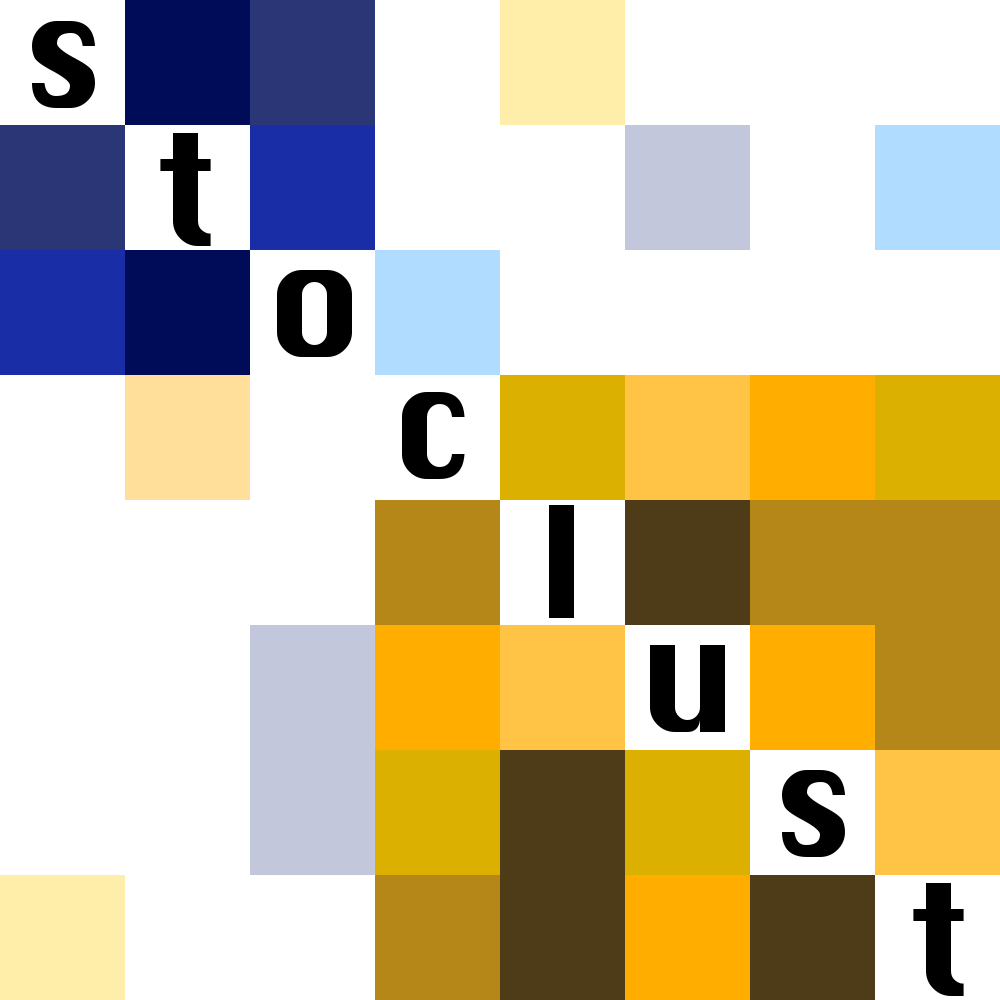stoclust

Clustering algorithms using stochastic analysis and ensemble techniques.
meyer_wessell
↳ clusteringmeyer_wessell(st_mat, min_times_same = 5, vector_clustering = None, index = None)
Given a column-stochastic matrix (that is, one with np.sum(st_mat,axis=1)=[1 ... 1]) describing the strength
of the relationship between pairs of items,
determines an aggregation of the items using the dynamical
approach of Meyer and Wessell. The algorithm
is inherently random, though fairly stable, and so may
be used as a one-shot measure but will be more reliable
in an ensemble.
A column-stochastic matrix \(\mathbf{T}\) will, by the Perron-Frobenius theorem, have a uniform vector \(\mathbf{u} = (1,...,1)\) as a fixed point, that is:
\[\sum_{j}T_{ij} u_j = u_i\]This fixed point is unique as long as the stochastic matrix is not reducible into disconnected components. If it is almost reducible (that is, if there are strongly connected communities with weak connections between them), the vector \(\mathbf{T}^t \mathbf{x}\) for some non-uniform \(\mathbf{x}\) will achieve uniformity among the connected components before achieving global uniformity.
The Meyer-Wessell approach relies on applying the column-stochastic matrix \(\mathbf{T}\) to a random initial vector \(\mathbf{x}\) and detecting communities by identifying clusters of components which achieve uniformity long before global uniformity is reached. This is done by iteratively applying \(\mathbf{T}\) to \(\mathbf{x}\) and, at each iteration, performing some kind of vector clustering on \(\mathbf{T}^t \mathbf{x}\). When the resulting Aggregation ceases to change ove a long enough number of iterations, it is returned as the final Aggregation.
Arguments
| Arguments | Type | Description | |
|---|---|---|---|
st_mat |
np.ndarray |
A square column-stochastic matrix describing a Markov dynamic. | |
min_times_same |
Keyword | int |
The number of iterations after which, if the clustering has not changed, the algorithm halts. |
vector_clustering |
Keyword | function |
The particular method of vector clustering which should be used in the algorithm. Should receive a vector as the sole input and return an Aggregation. |
index |
Keyword | Index |
The Index which labels the indices of st_mat, and which will be the item set of the returned Aggregation. |
Example
First we will generate a sample dataset with two touching circles:
import stoclust.visualization as viz
import stoclust as sc
import numpy as np
import pandas as pd
n = 500
samples = np.concatenate([
sc.examples.gen_disk(num_samples=n,rad1=0,rad2=1),
sc.examples.gen_disk(num_samples=n,rad1=0,rad2=1)+
np.array([2,0])
])
agg = sc.Aggregation(
pd.Index(np.arange(samples.shape[0])),
pd.Inex(['Left','Right']),
{
0:np.arange(0,n),
1:np.arange(n,2*n)
}
)Next, we apply the Meyer-Wessell algorithm
with min_times_same = 20. It experiences
confusion at the boundary but otherwise
identifies the two dominant structures.
dist = sc.distance.euclid(samples)
T = sc.utils.stoch(
np.exp(-dist/0.05) - np.eye(dist.shape[0])
)
new_agg = clust.meyer_wessell(T,min_times_same=20)
fig = viz.scatter2D(
samples[:,0],samples[:,1],
agg=new_agg, mode='markers',
text=new_agg.items.elements.astype(str),
hoverinfo='text,name',
layout = {
'margin':dict(l=10, r=10, t=10, b=10)
}
)
fig.show()Reference
Meyer, Carl D. and Charles D. Wessell. “Stochastic Data Clustering.” SIAM J. Matrix Analysis and Application 33-4: 1214-1236. 2012, doi: 10.1137/100804395.